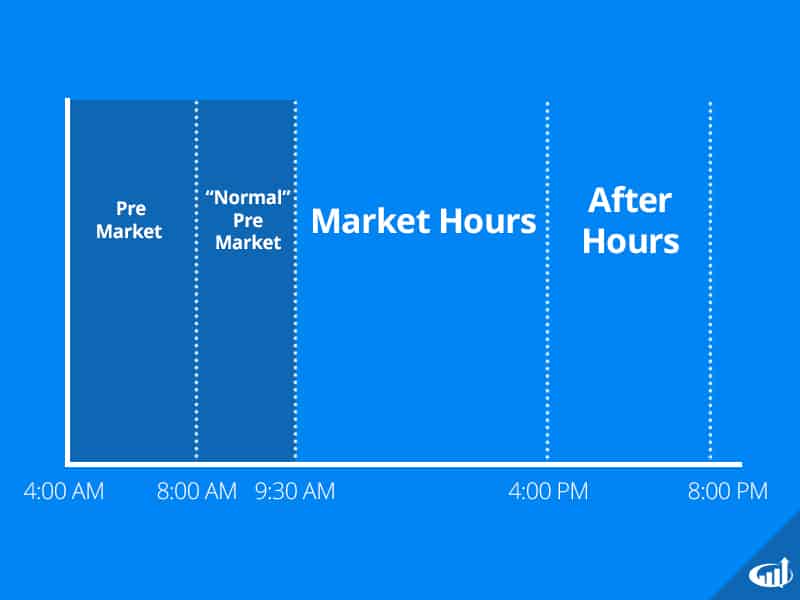Premarket Stocks: Introduction
Sponsored Ads
Pre-market stocks offer investors an opportunity to trade securities outside of regular market hours. This unique trading window provides several advantages, but it also carries potential risks. Before participating in pre-market trading, it’s crucial to understand its intricacies, advantages, and potential pitfalls.
Understanding Pre-Market Trading
The pre-market session, typically held from 8:00 AM to 9:30 AM Eastern Time before the opening bell, allows traders to place orders, view market depth, and monitor price movements. While orders can be placed during this period, they are not executed until the market opens at 9:30 AM.
Advantages of Pre-Market Trading
Early Exposure to Market Information
Pre-market trading provides investors with an early glimpse into the market’s sentiment and direction for the upcoming trading day. This information can help inform investment decisions and position strategies to capitalize on potential opportunities.
Increased Liquidity
The pre-market session often experiences increased liquidity, as large institutional investors and traders participate to adjust their positions or execute complex orders. This increased liquidity can result in tighter spreads and better price discovery.
Opportunity for Quick Trades
Pre-market trading can offer opportunities for quick trades. Due to the lower trading volume, traders may have an advantage in executing trades quickly and efficiently, especially in highly volatile stocks.
Weaknesses of Pre-Market Trading
Limited Market Depth
While pre-market trading provides increased liquidity, it may not reflect the actual market conditions during regular trading hours. The limited number of participants can lead to less accurate pricing and wider spreads.
Increased Volatility
The pre-market session often experiences increased volatility due to the lower trading volume. This volatility can make it difficult to accurately gauge market sentiment and can lead to sudden price swings.
Potential for Manipulation
The limited market depth and lower trading volume can make pre-market trading more susceptible to manipulation. Large orders can influence pricing and create false impressions of market trends.
Pre-Market Stock Trading Table
| Feature | Description |
|---|---|
| Start Time | 8:00 AM Eastern Time |
| End Time | 9:30 AM Eastern Time |
| Trading Activity | Place and view orders, monitor price movements |
| Order Execution | Orders executed at market open (9:30 AM) |
| Advantages | Increased liquidity, early market information |
| Weaknesses | Limited market depth, potential for manipulation |
FAQs on Pre-Market Stocks
What is pre-market trading?
Pre-market trading is a period before the official market opening when investors can trade stocks outside of regular trading hours.
When does pre-market trading occur?
Pre-market trading typically occurs from 8:00 AM to 9:30 AM Eastern Time.
What are the advantages of pre-market trading?
Advantages include increased liquidity, early exposure to market information, and opportunities for quick trades.
What are the risks of pre-market trading?
Risks include limited market depth, increased volatility, and potential for manipulation.
What type of orders can be placed during pre-market trading?
Traders can place market orders, limit orders, and stop orders during pre-market trading.
Does pre-market trading affect regular trading hours?
While pre-market trading provides early insights and liquidity, it does not directly affect regular trading hours.
How can I participate in pre-market trading?
To participate in pre-market trading, you must have a brokerage account that offers this service.
Conclusion
Pre-market stocks offer both opportunities and risks for investors. By understanding the advantages and weaknesses of trading during this period, investors can make informed decisions to capitalize on potential gains while mitigating potential losses. It’s crucial to conduct thorough research, have a clear trading strategy, and monitor market conditions carefully to successfully navigate the pre-market trading landscape.
Call to Action
If you’re considering entering the pre-market trading arena, consider the following steps:
- Research and understand pre-market trading dynamics thoroughly.
- Open a brokerage account that offers pre-market trading services.
- Develop a comprehensive trading plan that includes risk management strategies.
- Monitor market conditions and news events closely to make informed trading decisions.
- Execute trades with caution and never trade with more capital than you can afford to lose.
Disclaimer
The information provided in this article is for educational purposes only and should not be construed as investment advice. Investing in stocks, including pre-market trading, carries potential risks. It’s essential to conduct thorough research, consult with a financial advisor, and invest only what you can afford to lose.
